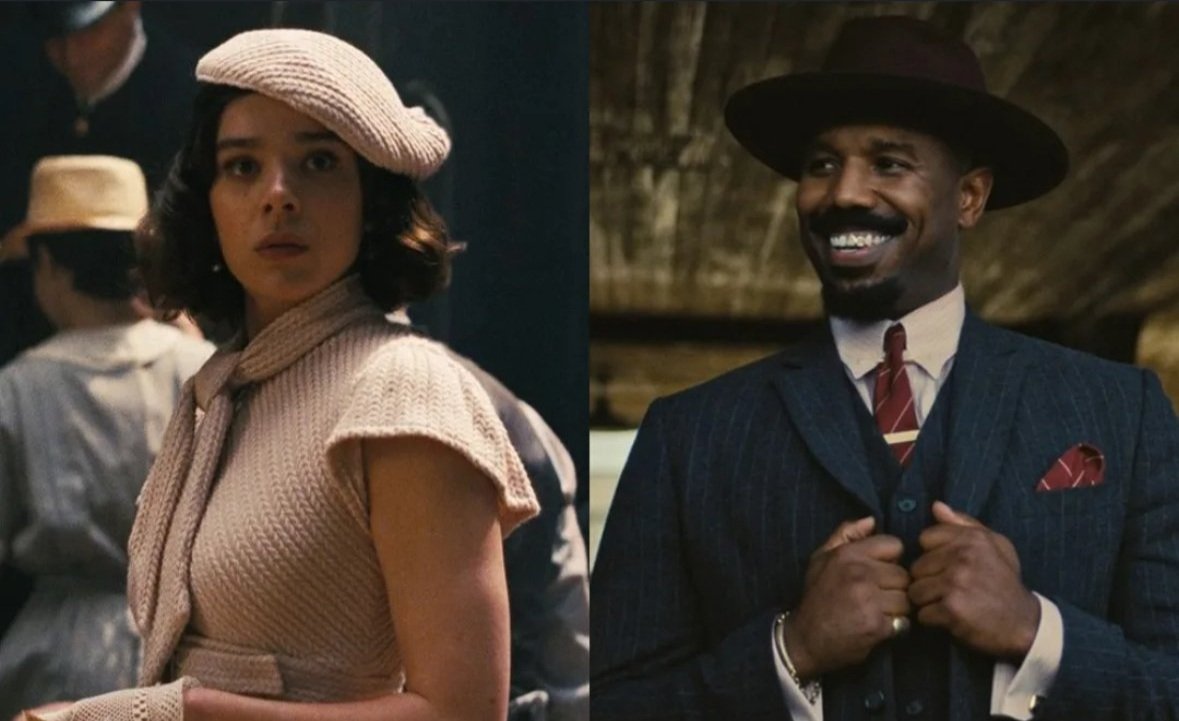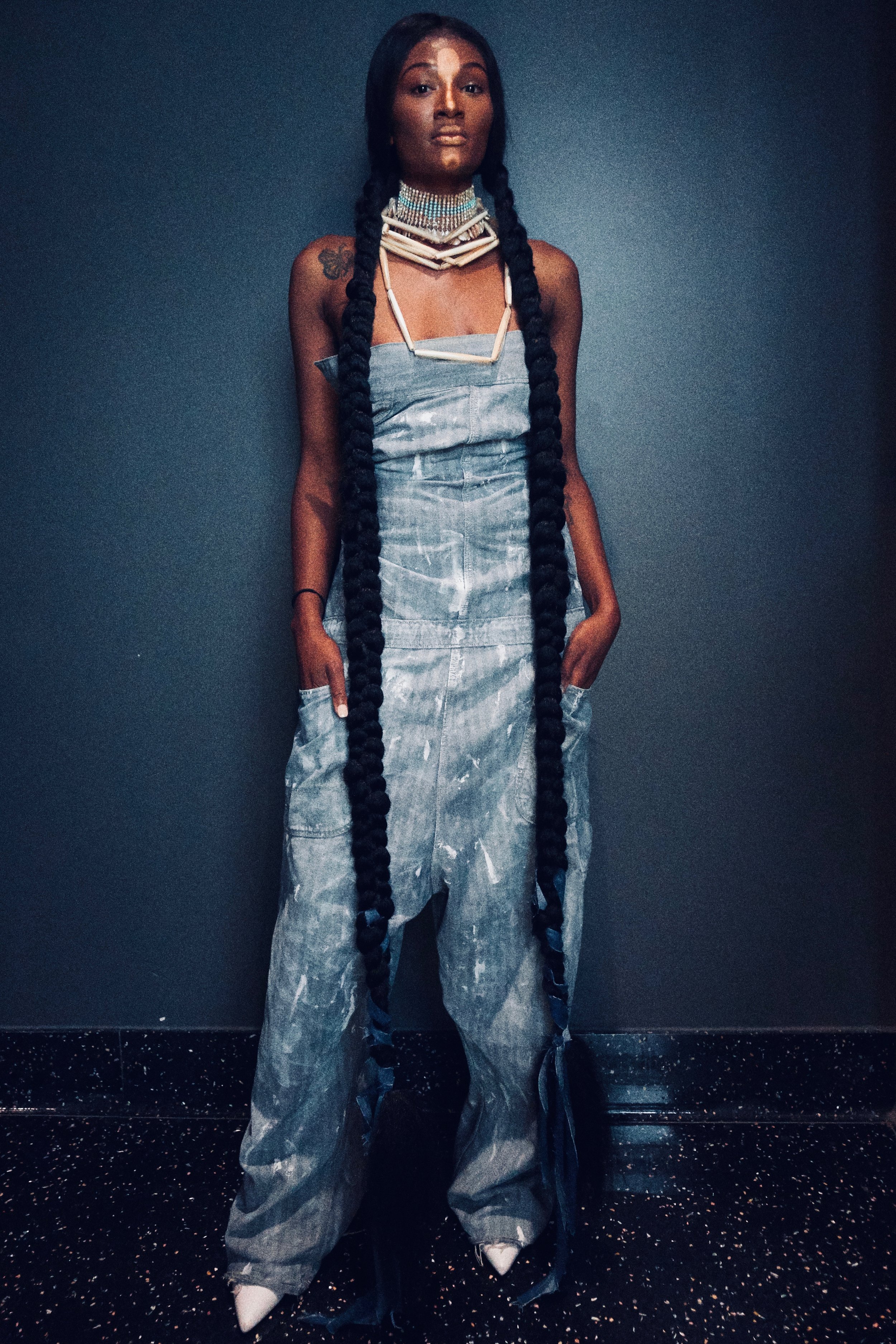"SINNERS" • The Fabric of Storytelling
At OAK & ACORN ~ Only for the Rebelles, we understand denim serves as a storyteller, an archive, and a mirror reflecting the truths of our society.
Throughout American history, denim has consistently symbolized deep social, cultural, and political meanings.
Recently, I sat down with my partner and Oak & Acorn co-owner Ian to reflect on the costuming in the film SINNERS.
Directed by Ryan Coogler, SINNERS follows twin brothers in 1932 Mississippi who return home to build a juke joint for their community, only to face a supernatural threat in the form of a predatory vampire.
Rooted in the harsh realities of Jim Crow-era America, the film delves into cultural appropriation, historical trauma, and Black artistic expression through a genre-blending narrative.
We explored the ways, costume designer Ruth E. Carter, thoughtfully uses denim to narrate the historical subtleties of class, identity, and lived experience, skillfully portraying how fabric can speak louder than words. As well as Director Ryan Coogler’s decision to shoot in 70mm film to highlight its artistic nuances.
Denim as a Social Marker & Political Statement
In the film SINNERS, denim operates as both a visual cue of social standing and a coded reflection of power. Costume designer Ruth E. Carter employed a “no tailoring” rule for the sharecropper cast members, allowing garments to feel genuinely lived in. I immediately recognized that the denim worn by the disenfranchised characters reflected more than functionality.
These were not traditional blue jeans, but tattered and often repaired overalls, many rendered in herringbone stripes.
Their patchwork textures, exposed seams, and sun-faded surfaces stood in sharp contrast to the crisp, deep indigo jumpsuit of Grace, the Chinese grocery owner, and the lightly dusted denim trousers worn by the Hogwood’s Klan crew.
IMAGES COURTESY OF ELI JOSHUA ADE, SMPSP, WARNER BROS., SINNERS MOVIE, PROXIMITY MEDIA
Ruth E. Carter’s deliberate choices for the characters tells a clear story of economic status in the movie. Characters with social or political authority wear well-kept denim in uniform, saturated shades. Those facing economic exclusion wear denim marked by wear, repair, and exposure. These contrasts communicate as clearly as dialogue.
Historically, this portrayal aligns with the lived experiences of working class and marginalized communities in America. From the late 18th century onward, cotton replaced wool and linen as the most widely used textile, especially among communities with limited material access.
IMAGES CAPTURED BY ELI JOSHUA ADE, SMPSP
IMAGES COURTESY OF ELI JOSHUA ADE, SMPSP, WARNER BROS., SINNERS MOVIE, PROXIMITY MEDIA
Black Americans, both enslaved and free, often received the ends of fabric lots. Their garments became a reflection of utility, labor and creativity defined by mending, adaptation, and preservation.
Denim, in this way, has always served as a visual storyteller. It traces the outlines of American caste structures, revealing how class, labor, and visibility shape lived experience.
IMAGE CAPTURED BY PETER OSBORNE FOR OAK & ACORN ~ ONLY FOR THE REBELLES NYFW
Denim has carried powerful political resonance. Throughout American history, it has clothed those working in fields, building in factories, living in carceral institutions, and marching in protest.
During the Civil Rights Movement, activists wore denim to align themselves with working class Black Americans. In this context, denim expressed solidarity with laborers and offered a statement of shared identity. Rather than seeking acceptance through polished presentation, many chose denim to reflect a protest.
From its foundation in labor to its presence in political movements, denim remains as a durable textile. It shows how people live, how they persevere, and how they pass stories forward.
Denim as a Cultural Artifact
Color Symbolism and Character Relationships
Denim holds deep ancestral significance within Black communities in America. The early textile economy in the U.S. was shaped by their labor and expertise. Black women and children in particular were responsible for indigo dying, fabric spinning and weaving. Their craftsmanship laid the groundwork for what would become the American blue jean.
Indigo, in particular, held both economic and spiritual meaning. Along the southeastern coast, the Gullah Geechee people, cultivators of rice, indigo, and cotton, carried these traditions forward. Living in relative isolation on the Sea Islands, they preserved African languages, spiritual practices, and textile arts that became foundational to American material culture.
IMAGES COURTESY OF PETER OSBORNE & DAVE FREEMAN FOR OAK & ACORN ~ ONLY FOR THE REBELLES NYFW
Director Ryan Coogler continues to deepen the film's narrative through his intentional use of red, white, and blue throughout the film. Smoke’s color palette is anchored in blue. He dons a denim page boy cap & patch pocket suit reinforcing his connection to modesty and working-class roots.
IMAGES COURTESY OF ELI JOSHUA ADE, SMPSP, WARNER BROS., SINNERS MOVIE, PROXIMITY MEDIA
In contrast, Stack stunts in a sharp red brimmed hat, his suiting is more sophisticated. He wears a pocket watch & tie clip. His accessories are bold signaling a more charismatic & performative energy than his twin brother. Complimentary, Stack's partner Mary wears soft blush pink tones & Smoke’s partner, Annie, is wrapped in blue.
IMAGES COURTESY OF ELI JOSHUA ADE, SMPSP, WARNER BROS., SINNERS MOVIE, PROXIMITY MEDIA
In SINNERS, Ruth E. Carter draws directly from the Gullah Geechee legacy. Her use of ‘haint blue’ in Annie’s wardrobe is subtle yet intentional.
IMAGES COURTESY OF ELI JOSHUA ADE, SMPSP, WARNER BROS., SINNERS MOVIE, PROXIMITY MEDIA
‘Haint blue,’ a soft indigo tone painted on porch ceilings and doorframes to ward off spirits reflects West African beliefs around protection and ancestral guidance. This tradition, rooted in African cosmology, reveals how color and cloth have long served as vessels of cultural memory.
The color marks Annie not only as a central figure in the story, but as a spiritual teacher and guardian of ancestral knowledge.
Through this detail, Carter connects the character to the lineage of Black women who held and transmitted sacred practices, honoring their presence through palette, pattern, and purpose.
IMAGE OF GEECHEE GULLAH RING SHOUTERS COURTESY OF JEKYLL ISLAND FOUNDATION
Why Denim’s Historical Significance Matters Today
At OAK & ACORN, we honor and explore the complex legacy of denim through our work. Denim allows us to reclaim and retell these essential histories, paying respect to the labor and ingenuity of those who created it and wore it. garments.
By designing denim clothing thoughtfully and intentionally, we actively participate in an ongoing historical narrative. We preserve, honor, and amplify stories embedded within this powerful textile.
Denim has always been and will always be a symbol of our social realities, cultural memories, and political truths. It serves as both a witness and a storyteller, holding within it the resilience of those who shaped American history. Ruth Carter’s visionary costuming in SINNERS beautifully reaffirms what we at OAK & ACORN deeply believe: Denim remains a profound icon, woven through every chapter of America’s complex narrative.



















